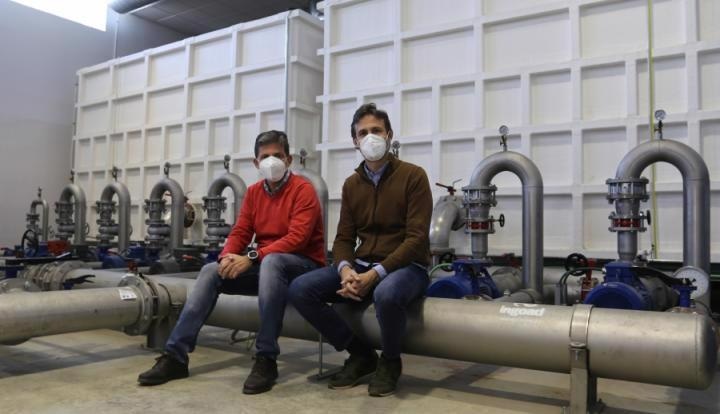Apr 7 2021
In recent years, pressure-based irrigation techniques have substituted conventional ones, thereby enhancing water efficiency but increasing the dependence on energy. This has led to advances and innovations in technology that have facilitated agricultural activity.
 Researchers from the Agronomy Department at the University of Cordoba. Image Credit: University of Cordoba.
Researchers from the Agronomy Department at the University of Cordoba. Image Credit: University of Cordoba.
This, in turn, increases the energy costs associated with the agriculture sector, some of the highest ones in the European Union.
Juan Antonio Rodríguez Díaz and Jorge García Morillo, scientists from the Hydraulics and Irrigation Group of the María de Maeztu Unit of Excellence, at the Department of Agronomy of the University of Cordoba (DAUCO), aimed to increase the energy efficiency of irrigation.
To this end, they have field-tested an economical technology that leverages the surplus pressure on the grid to produce energy.
On the farm where it was installed, this technology has made it viable to give up the diesel generator that was utilized to power fertilizer injector pumps, filtering equipment and other devices essential for irrigation. This thus rendered the grid self-sufficient and operated on clean energy.
The yearly savings for the farmer came up to €2,400, and his carbon footprint was decreased by up to 9 tons of CO2 as a result of the total removal of the diesel generator.
Such outcomes are realized by the installation of hydraulic pumps that function as turbines, called PAT (Pump as Turbine).
The water drives the impeller and produces electricity, much like a small hydroelectric power plant.
However, it is cheaper compared to conventional turbines for small power levels, as the production of hydraulic pumps is much higher, affecting their price.
The team employed the EPANET hydraulic model to execute a theoretical analysis of the pressures that would occur on this network, thereby finding the most undesirable situations and the point where the turbine must be installed.
As soon as the system was assessed, it came into operation in the field, where this type of technology is very unique. Fluctuations of flow in irrigation are extremely high.
The researchers implemented a range of control elements in the design to adapt to the fluctuations, so that the turbine would always get sufficient pressure and ideal flow rates to provide high performance.
Another important innovation is the telemetry system, which measures and records the main hydraulic and electrical variables in real time and allows the plant to be monitored via the Web, and its performance to be analysed.
Jorge García Morillo, Department of Agronomy, University of Cordoba
Thus, farmers in off-grid regions with higher pressure can produce their own electricity and decrease the dependence of their irrigation systems on energy, or even transform their facilities self-reliant. This is clean and economical energy, which adds value to the end product by decreasing the carbon footprint.
Something even more important for farmers than the economic savings related to energy.
Juan Antonio Rodríguez, Department of Agronomy, University of Cordoba
The agricultural community that is represented by the Association of Irrigation Communities of Andalusia (FERAGUA) exhibits huge interest in the benefit of removing diesel generators and realizing energy autonomy through renewable energy using this technology, which has been developed as part of the European REDAWN project, of which both the University of Cordoba and FERAGUA are collaborators.
The plant was set up at the Finca Cortijo Calonge, which is a member of the Community of Irrigators of the Genil River’s Left Bank.
Journal Reference:
Chacón, M. C., et al. (2021) Evaluation of the design and performance of a micro hydropower plant in a pressurized irrigation network: Real world application at farm-level in Southern Spain. Renewable Energy. doi.org/10.1016/j.renene.2021.01.057.